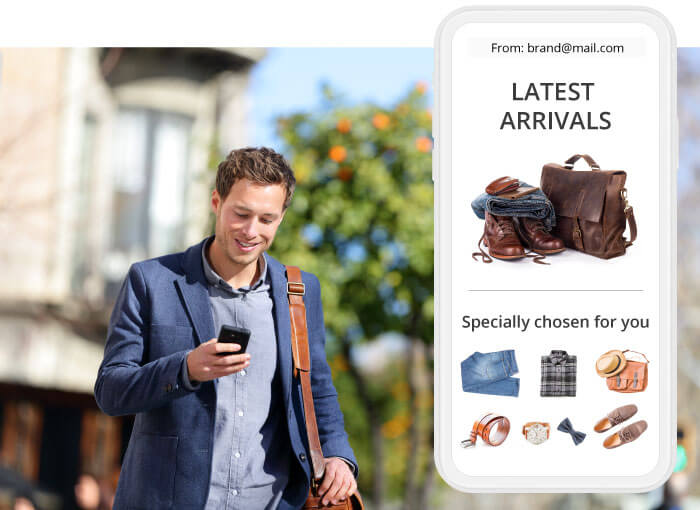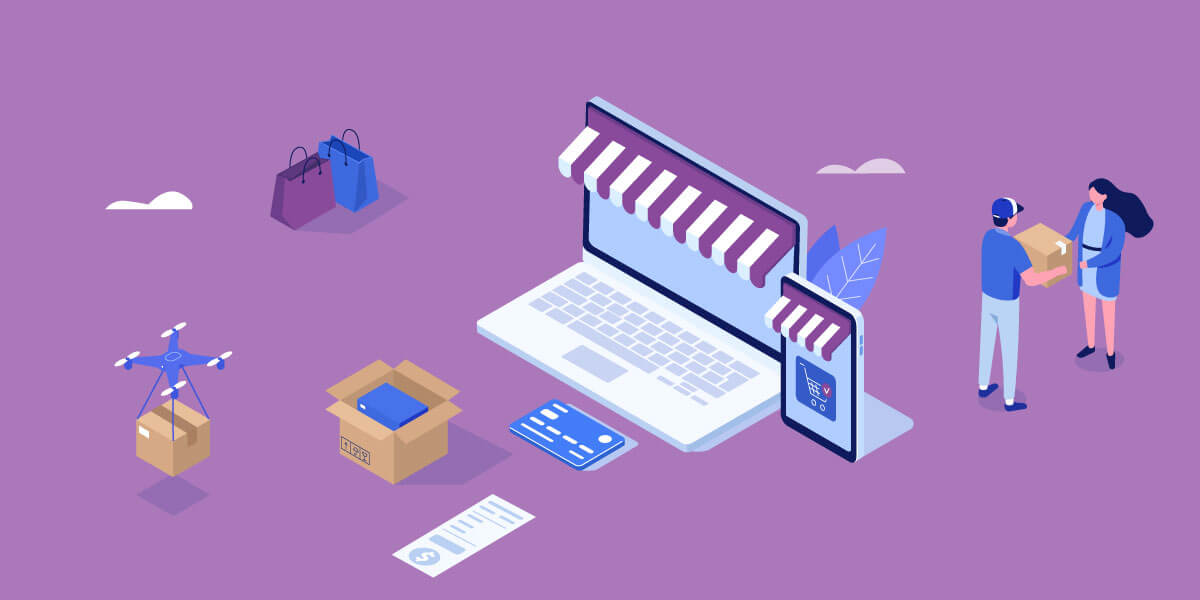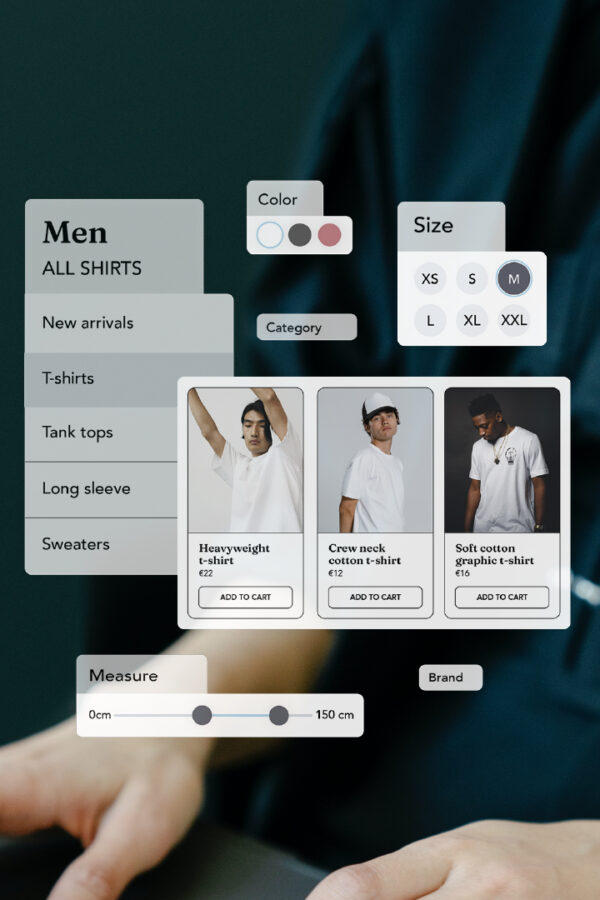CHAPTER 4:
AI and Personalization is the future
AI, Machine Learning, and behavioural-driven algorithms empower online retailers to detect and react to consumer trends in real-time.
90% of leading marketers say personalization significantly contributes to business profitability.
In this chapter, we’ll take a look at the exciting future of e-commerce personalization

E-commerce Personalization Statistics
- 91% of consumers are more likely to shop with brands that recognize, remember, and provide relevant offers and recommendations. (Accenture)
- 90% of leading marketers say personalization significantly contributes to business profitability. (Google)
- 66% of customers expect companies to understand their needs and expectations. (Salesforce)
- 52% of customers expect offers to always be personalized — up from 49% in 2019. (Salesforce)
AI and Machine learning for e-commerce
A good AI solution will improve your customer experience, help you lift conversion, revenue and profit significantly.
By using AI for e-commerce sites, online retailers can automate the workload and remove much of the manual heavy lifting. AI reacts faster than any human and can catch both micro and macro trends.
AI learns from visitors’ behaviour in real-time, anticipating their intent, and adapts the results to rank the most relevant products higher, maximising your sales.
E-commerce Site search
Personalized site search presents the most relevant products to online shoppers.
AI-driven site search is a powerful component for any e-commerce site and can contribute to increased revenue, conversion, and profits.
By using AI and machine learning for different aspects of the search functionality you can also greatly improve the shopping experience.
Autocomplete
As the user starts typing in the search box, AI instantly suggests the fastest route to the intended product by making the most relevant suggestions of products, categories, and content.
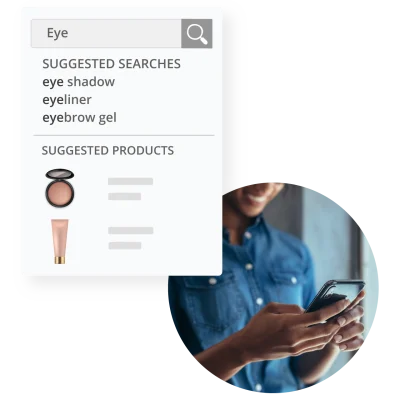
Content Search
Enable customers to easily find more content such as store locations, delivery information, care instructions, and brand information. It simply adds depth to the search result.
Synonyms
What ‘sandals’ means to one person means ‘flip-flops’ to another. Synonyms advise customers and ensure that future searches are more relevant.

Product & Category Suggestions
Take advantage of your long-tail as relevant products will be displayed to users whilst typing, enabling them to instantly find matches. On the search results page, you can expose other query-relevant results using a plethora of different recommendation algorithms.

Site search optimised for e-commerce
Boost revenue, conversions and profit with Voyado.
Find out more
Site navigation
Site navigation helps users to sort and narrow down the products to those that match their needs. It enables them to investigate several choices and return without affecting previously selected refinements.
Dynamic facets for relevant results.
Facets and facet values dynamically adapt their order as results are refined. When browsing further, they narrow down the product list to find more relevant matches. Facets can be any attribute, i.e., size, colour, category, brand, to name a few.
Categories
Categories help users get an overview of what your site is offering. To avoid overdoing it, categories should be mutually exclusive where possible. Categories can be ordered by name, the number of products in the category, or by relevance.
Breadcrumbs
Breadcrumbs are secondary navigation that helps users keep track of where they are on the site. It is recommended to have breadcrumbs on both category pages as well as product detail pages.
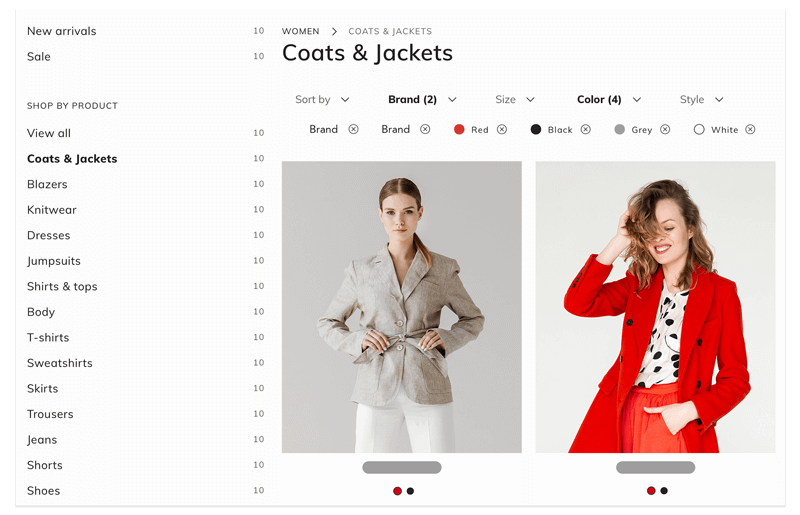
Personalized Product recommendations
Product recommendations make online shoppers more likely to complete their purchase and contribute to cross-sell and up-sell. Products are suggested based on the collective interest as well as the unique visitor’s history.
Utilizing machine learning and AI is great to ensure that relevant products are recommended, and increasing the average basket size, leading to higher conversion and increased sales.
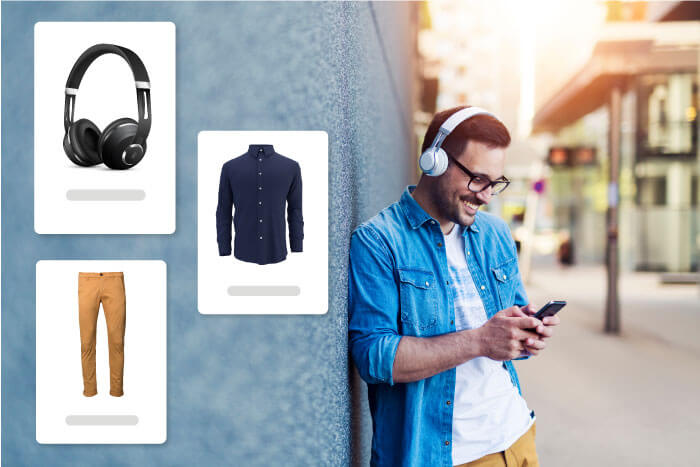
Inspire with the best-selling products
These recommendations display real-time popular and trending products. They are suitable on the start page to welcome visitors, on category pages to show popular products for the specific category.
Recommendations based on customer
Recommendations based on the customer are site-wide personalized recommendations based on individual behaviour such as products the visitor has seen or bought. You can use them on the start page to make the visitor feel more “at home”.
Increase the shopping cart value
There is a golden opportunity to recommend products based on the items in a visitor’s cart. These product recommendations are used for both cross-sell and up-sell and to push the order value above a certain limit by recommending products that will pass the threshold value.

Give abandoned products another chance
These are customer-based recommendations of products from the customer’s abandoned cart. The system remembers the visitor’s previous intentions and gives these products a new chance.
Remind about viewed products
Recently viewed products are another type of customer-based recommendation that works as a reminder of previously viewed items and allow the customer to return to products after viewing similar ones.
Benefit from visitors with similar tastes
Inspiration from people with similar tastes is one of the main drivers for purchases. Recommendations based on those who also bought can be used on product detail pages.
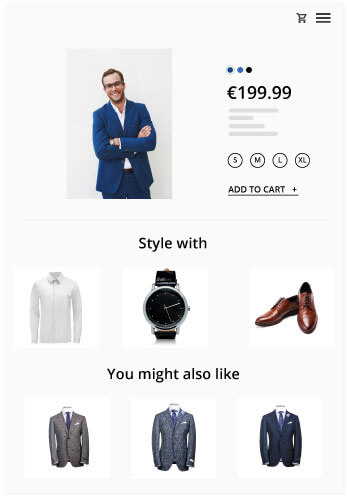
Recommendations based on favourites
A customer adding an item to their favourite list says a lot! Take advantage of this information and give your customers personalized product recommendations based on their favourites.
Personalized Email product recommendations
Make use of your customers’ behaviour on your site to send them more relevant email product recommendations that can lift your conversion rate, CTR, and revenue.
Spur further engagement by adding a block of attractive recommendations in your ‘order confirmation’ and ‘abandoned basket’ emails.
